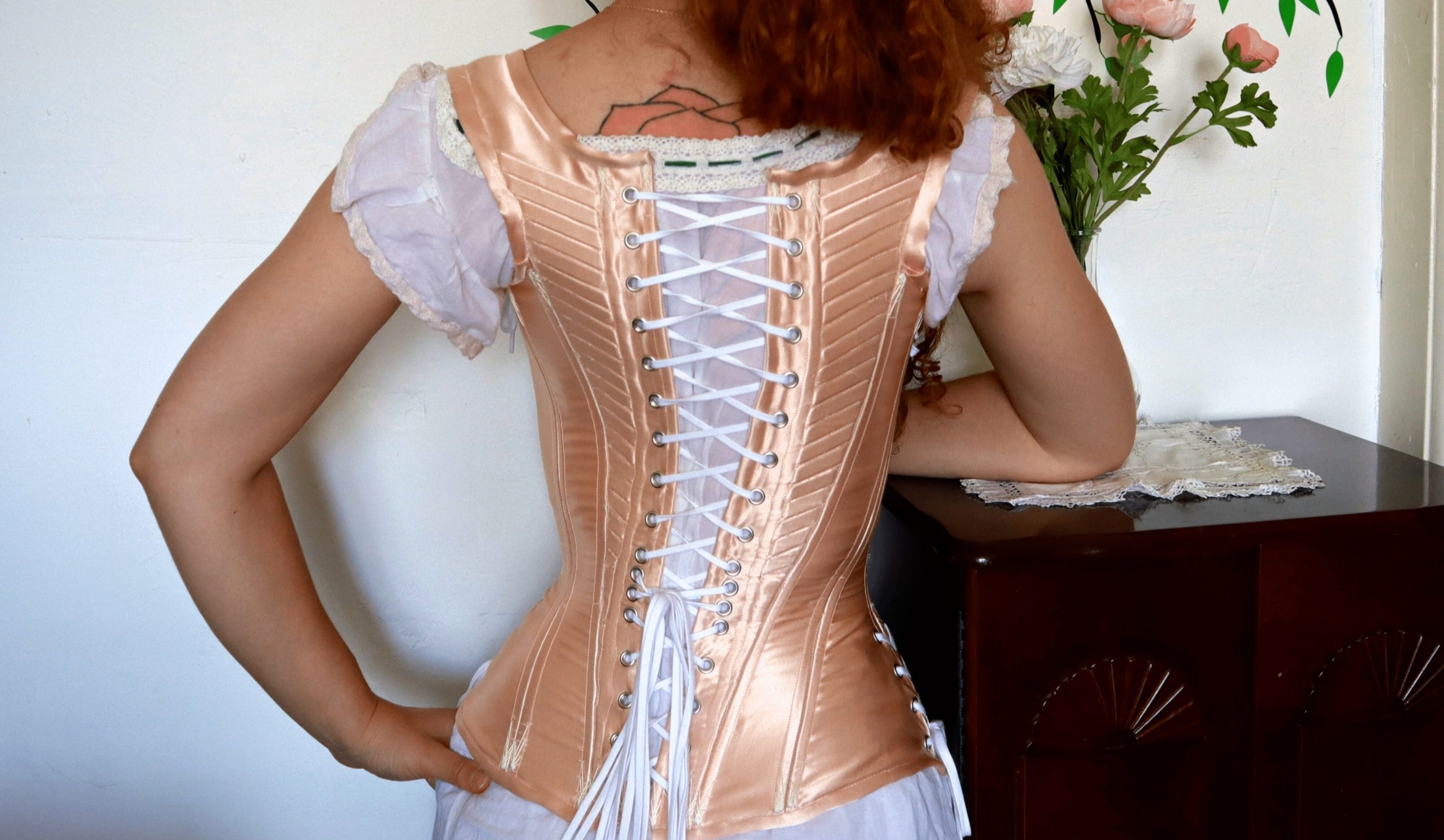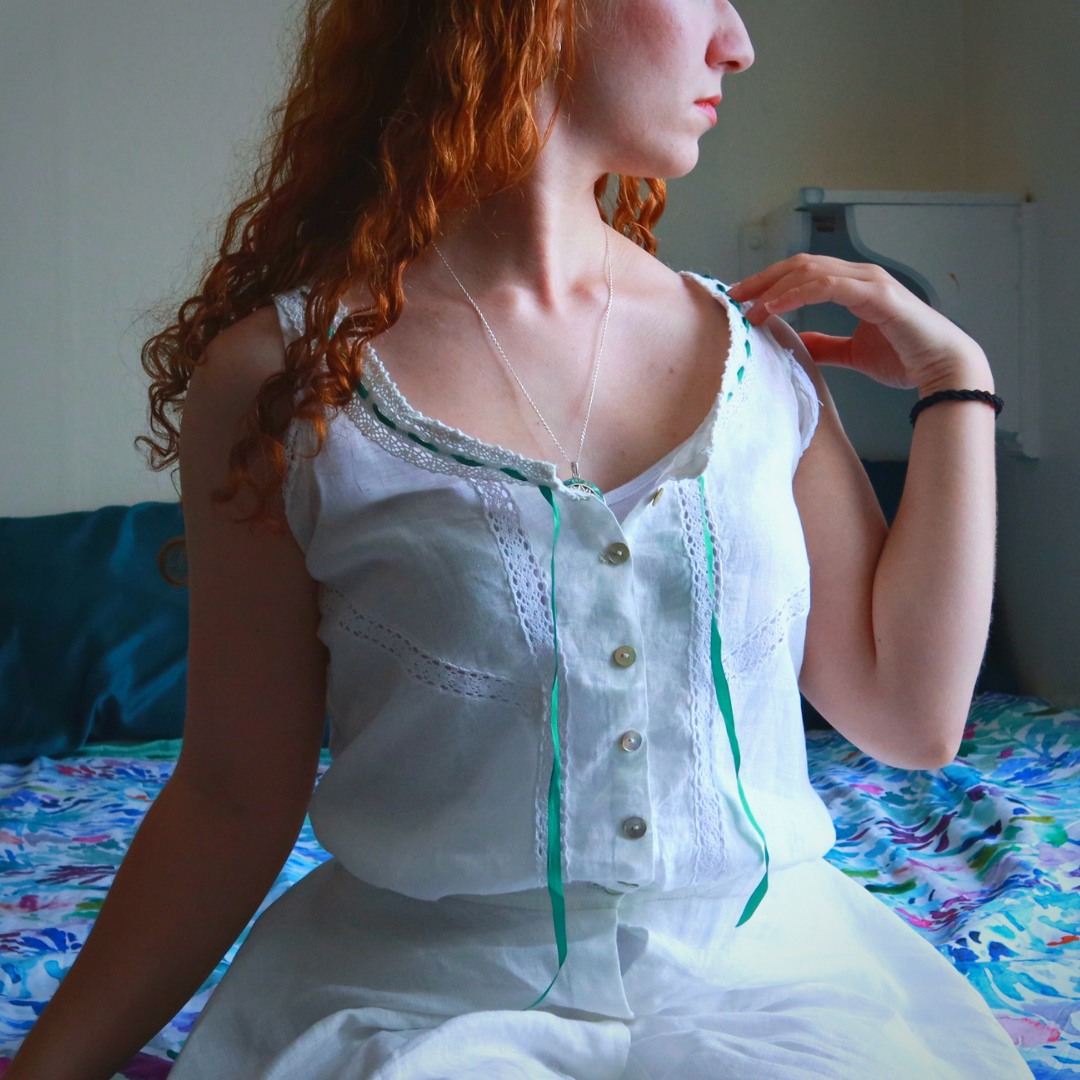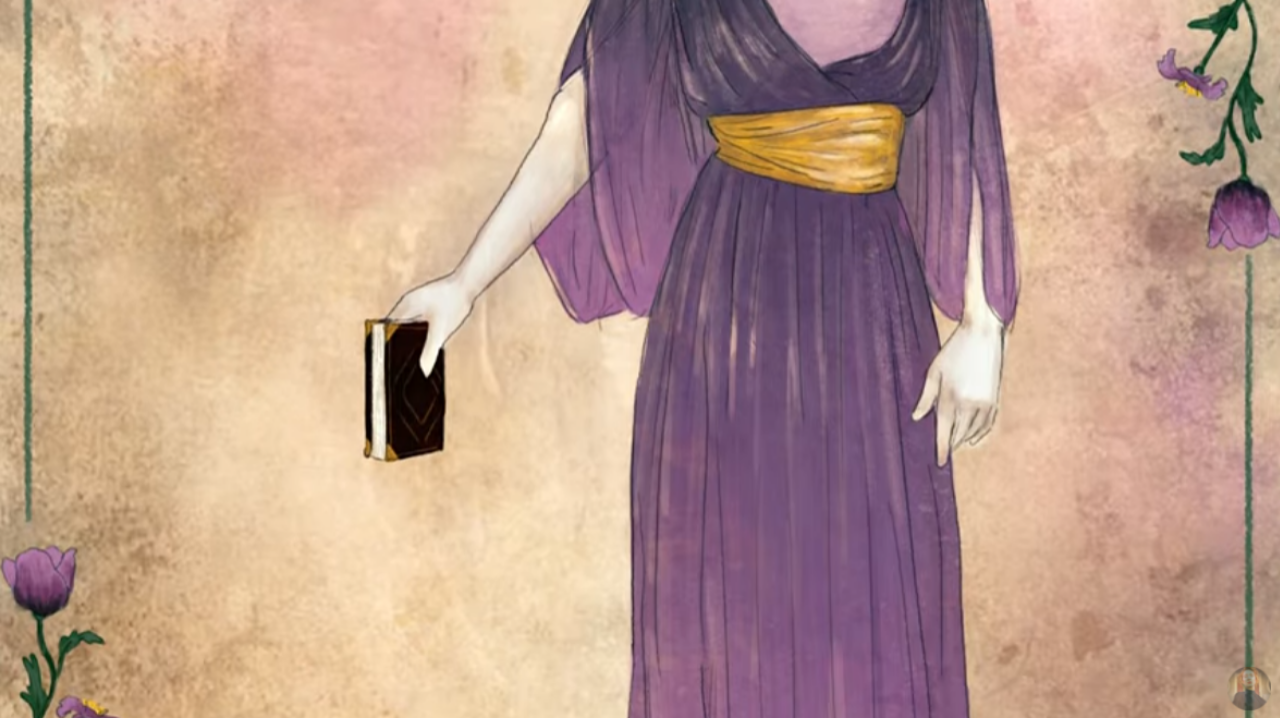Sewing Wonder for the Wondersmith
Sewing Wonder for the Wondersmith
The 1910 Poppy Dress
Making art with a chronic illness is hard, whether it's historical costuming and sewing, ceramics, cooking, or anything else. My dear friend the Wondersmith knows better than most what it's like to create while living with chronic pain.
To celebrate her still being here, I designed and sewed a historical dress for her based on Titanic era fashions! This 1910 dress, with an empire silhouette and tulip-shaped skirt drapery, is based on the Hungarian Breadseed Poppy whose seed pods had been a focus of the Wondersmith's art. The process became a metaphor for what it's like to make art with a chronic illness, and the struggle between inaccessible standards, being inspirational, and being real.
-
Hello and welcome back! I’m SnappyDragon, and you can call me V. I want to tell you about a friend of mine. She’s a self-described nefarious do-gooder , prone to leaving buried treasure around her city and cooking delicious and beautiful food out of foraged ingredients—which, in the before times, she would then serve to dinner parties of randomly selected strangers on ceramic dinnerware that she made herself. I don’t know how so much artistic badassery can fit in one person. She’s also part of Chronic Illness club, and hers has not been kind to her over the past few years—
[Miss Wondersmith] A couple months ago when I was first diagnosed with Ehlers Danlos syndrome, and my gastroenterologist and a couple specialists told me that there was nothing else they could do for me, and the alternative doctor that i see told me she didn't know what to do . . . I just felt like I was running out of options and I was just gonna die. But thankfully I’m not in that mental place now and I’m not in that physical place now. Which is amazing [laughs] because I love it here! I don't want to go yet. I’ve been on TPN for like, two and a half weeks now? And basically what that is, is there is a pump connected to a bag of formula that goes right into my veins, so when I’m having a bad gastroparesis flare up and I can't eat or drink I’m still getting fluids and nutrition in my body. The start of 2021 is going to be rough for me. I’m getting a pretty invasive surgery in mid-January and I know that I’m gonna be stuck in bed for probably a couple months after that.
Miss Wondersmith’s operation is actually the day this video comes out. We’ve talked about collaborating on projects together several times before, and I have always wanted to sew something inspired by this amazing artist. If we were going to make her a dress, it needed to happen quickly so she could wear it before her recovery. So I asked if she had any ideas or dreams I could stitch into reality, and she asked if I could make anything to go with this tea set she made. It’s based on the Hungarian Breadseed Poppy, which looks like this {photo}.
I had already designed a dress based on flower petals, which you’ll see in a future video, so of course that’s where my mind went! I managed to find a gorgeous ombre silk chiffon in the same colors as the poppy’s petals. Miss Wondersmith and I had chatted a while back about her taste in clothes, and she’d described her figure as being ideal for 1920s styles. 1920s fashion is Not My Thing, but I was reminded of the 19-teens styles which preceded it! The surplice fronts and tulip-shaped skirts of these gowns suggests the shape of flower petals, and they’re often cut quite straight with only a sash or high empire waist for fitting.
Normally when I design an outfit, it’s for me, so the picture I have in my head is good enough. But this time, I needed an actual design sketch, and I can’t draw worth anything. However, the amazing artist behind the channel Aspiring Costume Designer was able to make this beautiful sketch for me! Hire your friends when you need artwork, folks. They’re worth it.
Miss Wondersmith loved the design sketch, so I went ahead and got my materials. The dress will consist of a straight-cut foundational slip made using a modified Folkwear 264 pattern, in fuchsia silk habotai. There are four petal-shaped draperies over that in the ombre chiffon, one hanging from each shoulder, and the sleeves will be smaller petals that fall open towards the wrist. The sash is a pop of yellow silk noil, which has a nubby sort of texture that makes me think of flower pollen. It can be tied under the bust or at the waist, or even at the hip for a more 1920s look if Miss Wondersmith prefers.
Welcome to my world for the next month or so! If y'all remember my friend Sara from this video, I am basically staying with her family for the next month or so during shelter in place. And I’ve got this nice little setup in
her basement, so I don't have a proper cutting table but I have some spaces. The thing is though, I need to make this dress as fast as absolutely possible, on an unfamiliar machine, using tricky materials, in an unexpected setup and . . . I frankly, honestly I don't know how I’m going to do it.
I cut out the slip, but decided to start sewing on the simplest part of the dress: the sash. This machine looks like it’s from the late 1960s, and while it’s been beautifully cared for, I am only used to my modern machine, which sews over pins without complaint and has about 50 stitches to choose from.
To avoid any seams on the front of the sash, I’ve cut one of my two lengths of silk noil in half, and am sewing them all together at the short ends with the longest piece in the middle. The whole thing is then sewn into a long tube, ironed with the seam in the center, sewn shut at one end, and turned out and slip-stitched at the other.
Continuing to get a feel for the machine, I then stay-stitched the neck and armscyes of all four pieces of the slip: a front and back, and a facing for each. I had a really hard time getting straight stitch lines on such thin, slippy material. Without an overcasting stitch, I had to french-seam everything, including the front facing darts that I foolishly cut out. The front and back facings were attached at their sideseams . . . twice. The facing hem thankfully only needed to be sewn once.
As I fought my way through the french seams on the rest of the slip, I kept stopping and starting out of sheer frustration. This slip would have taken me less than a day on a modern machine, but on this one it was dragging on and on. This should be easy. So why did it feel so hard? What was wrong with me?
The shoulder straps were hand-stitched onto the slip. They’re tube-shaped, and sewn on inside-out with the front piece inside the strap, turned out, then sewn to the back with the raw edges turned under.
I agonized over how to finish the edges of this chiffon without ruining the ethereal, flower-petal look of the dress. The best I could manage was using a zigzag stitch with tight tension to create a sort-of rolled hem, changing between black and purple thread at the color transition. It wasn’t easy going. The thread broke often, and the machine jammed more than once despite being well maintained, even though I was trying to do things that wouldn’t be that challenging in my usual setup at home. It struck me as an oddly apt metaphor for chronic illness : working with equipment, or a body that needs incredibly careful handling in order to do the things most people don’t even think about, if it can do them at all. Our equilibrium is fragile (if it exists), so missing one little bit of self-care can spiral into a disaster.
I changed the sleeves to be elbow-length, since I thought they’d suit the dress better now that I could see it.
Once all the chiffon was finished, I lined up the top edges of two of the larger petals and sewed them together with long basting stitches. Those same stitches were used to gather the chiffon up as tight as possible to fit onto the shoulders of the foundational slip.
All that was left was to arrange the drapery around the neckline and armscyes, and set the sleeves. In all honesty, I was feeling pretty rough about how this project was going. Nothing had been easy and the finishing wasn’t very clean. I placed a pillow inside the dress and hung it in the closet so I could work with the draping, then tacked and basted the chiffon where it needed to be.
This area seemed far too delicate and slippery to run through the machine, so I set the sleeves by hand using spaced backstitches.
[Miss Wondersmith] I know that I create a narrative of “I’m sick, but look what I can do”, “I’m in pain, but look how much beauty is in the world”. I happen to cope with pain in a way that looks inspiring and productive, and is rewarded in this culture. Not everybody copes like that. It is okay if your great accomplishment is getting through the day. We all react to trauma and pain differently; I happen to react in a way that's rewarded. You don't have to, to be worthy. And there I go, tying the bow of helpful advice around the pain and fear that I’m feeling today.
It’s not the best sewing I’ve ever done by a long shot, but it’s finished, and in time to send off. Done is better than perfect. Your best may not look like someone else’s best, or even your own best a week ago.
Sometimes your best is getting out of bed— or staying in bed! Sometime’s it’s ten stitches, or one, or none at all. Maybe your best is appreciating someone else’s art, maybe it’s just surviving the day. But whatever it is, the world is better off for you having done it. So until next time, keep creating whatever it is you create.





